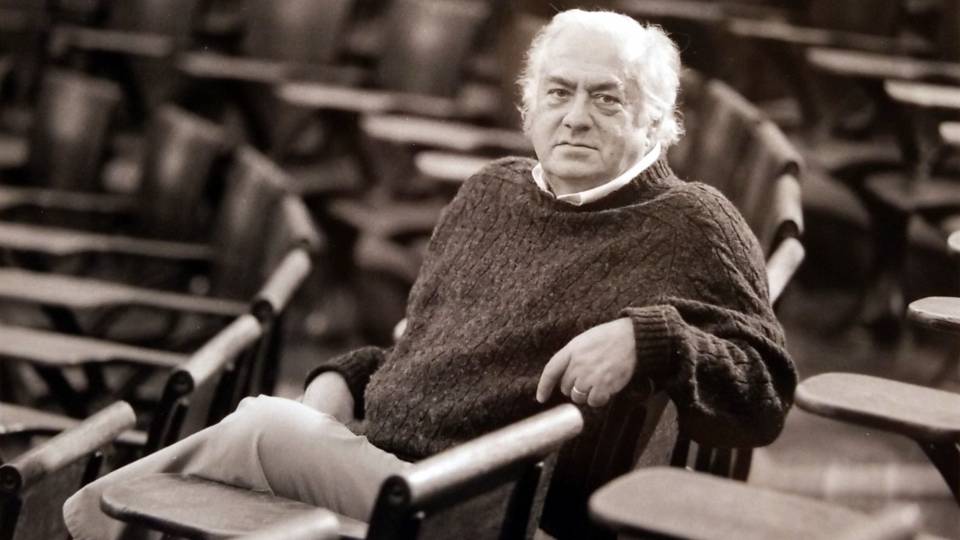Dudley Saville, a chemical engineer whose research and teaching
transcended his specialty and inspired advances and leaders in many
fields, died Wednesday, Oct. 4, at age 73. The cause was cancer.
Saville, the Stephen C. Macaleer '63 Professor in Engineering and
Applied Science, was a pioneer in the fields of fluid mechanics and
colloid science. His work revealed fundamental principles governing the
behavior of fluids and colloids, which are very small particles
suspended in a fluid. His highly cited research formed the basis of
many subsequent applications in areas ranging from the production of
high-performance fibers to inkjet printing.
Colleagues described Saville as possessing a rare combination of exacting standards and great personal empathy.
"He was, first of all, a wonderful human being," said Pablo
Debenedetti, a longtime colleague and former chair of the Department of
Chemical Engineering. "He had absolutely impeccable standards of
integrity and honesty. The values of friendship, collegiality and
sharing in the teaching enterprise -- these all made him central to the
work of the chemical engineering department."
A former Ph.D. student, Charles Zukoski, now vice provost for research
at the University of Illinois, recalled Saville as a "superb mentor."
"He could be very warm and caring. On the other hand, he was a real
taskmaster," Zukoski said. "He could engage with people at a very
personal level but also hold them to very high standards, and do one
without damaging the other."
His sometimes gruff demeanor disappeared and Saville "melted" when he
spoke of his family and particularly his grandson, Aidan, colleagues
said.
Saville served as adviser to 25 Ph.D. students and routinely taught the
department's core undergraduate courses in fluid mechanics and
thermodynamics. "He was a pillar of our teaching program," Debenedetti
said. His students have gone on to careers in academia as well as in
different industries, including pharmaceuticals, specialty chemicals,
materials and telecommunications.
Saville grew up in Lincoln, Neb., and earned his undergraduate degree
in chemical engineering from the University of Nebraska in 1954. After
a year working for Union Carbide, he joined the Air Force and spent
three years piloting jets. He then went back to the University of
Nebraska for a master's degree and earned his Ph.D. from the University
of Michigan in 1966. Saville returned to industry, working for the
Shell Development Corp., before joining the Princeton faculty as an
assistant professor in 1968.
He earned tenure at Princeton just three years later on the strength of
several seminal papers he produced as sole author. "He was a person
driven strictly by curiosity," said Ilhan Aksay, a professor of
chemical engineering who later came to Princeton and developed a
longstanding collaboration with Saville.
Among those early results was a paper that described the exact
conditions required for an electrically controlled jet of fluid to
maintain stability. The paper continues to be referenced today and the
phenomenon that it explains is in widespread use in medicine, in the
production of polyimides, which are very strong and heat-resistant
polymer materials, and in electrically controlled spray painting.
Saville went on to become a leader in the science of colloids. In 1989,
he published a major text in the field, "Colloidal Dispersions," with
Princeton colleagues William Russel, now dean of the Graduate School,
and William Schowalter, professor emeritus of chemical engineering.
Among many applications of colloid science is the important field of
protein separations in which protein molecules are isolated
individually from a complex mixture.
In the 1980s and 1990s Saville led a series of experiments that were conducted by astronauts aboard the space shuttles.
In 1992, Saville struck up a collaboration with Aksay, whose expertise
as an experimentalist complemented Saville's strengths as a theorist.
"It was a great pairing," said Debenedetti. "The work they did together
was much more than the sum of their parts."
Zukoski said that the collaboration seemed unlikely at first, but
lasted until Saville's death. "Out of that came the most amazing
things. They had a series of just stunning papers," he said.
Saville and Aksay developed methods for controlling the behavior of
colloids, coaxing them to arrange themselves in precise and minute
patterns on surfaces. Such nanopatterned surfaces are of particular
importance in creating materials that manipulate the transmission of
light, which is key to fiber-optic telecommunications.
In recent years, Saville received major recognition for his work.
Princeton named him to the Macaleer chair in 2001 and, in 2003, he was
elected to the National Academy of Engineering, the highest
professional recognition for an engineer. At a symposium held in honor
of his lifetime achievements in 2003, colleagues described his work as
"invariably characterized by deep physical insight and formal
elegance."
Saville is survived by his wife, Joy Saville, of Princeton; his sister,
Harriet Potter, of Lincoln, Neb.; his son and daughter-in-law, Alex
Saville and Amy Jacob, of Highland Park, N.J.; his daughter and
son-in-law, Andrea White and Stephen White, of Princeton, and their
son, Aidan Saville White.
A memorial service is scheduled for 4:30 p.m. Sunday, Oct. 8, at Nassau
Presbyterian Church in Princeton following a private burial. In lieu of
flowers, donations may be made in his memory to: the Crisis Ministry of
Princeton and Trenton, 61 Nassau St., Princeton, NJ 08540; or the
American Cancer Society, P.O. Box 22718, Oklahoma City, OK
73123-1718.

